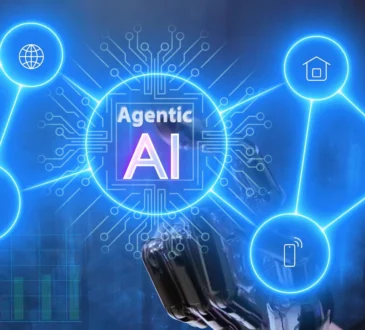
I love a heroic rewrite as much as the next developer. New repo smell, fresh dependencies, zero legacy tests to break… what could go wrong? A lot, actually. Most companies don’t need a bonfire—they need a well-planned renovation that keeps the app running while you swap out the creaky parts. Below is a practical guide to modernizing software incrementally, with techniques, proofs, and a few “I learned this the hard way” tips.
Why Not a Full Rewrite?
Rewrites promise a clean slate, but they also pause delivery for months and often ship late with fewer features. Industry guidance favors incremental modernization because it lets you release value as you go and reduce risk at every step. Martin Fowler’s Strangler Fig approach—add a façade in front of your legacy system, route some requests to new code, and gradually replace the old—exists for exactly this reason. It spreads investment and returns over time so the business isn’t waiting for a single Big Bang day that never comes.
Microsoft’s Azure Architecture Center documents the same pattern for cloud migrations: place a proxy in front, peel functionality into new services, and keep customers using the same interface while you modernize behind the scenes.

The Smart-Upgrade Toolbox
Think of these as power tools for safe change. Use them together.
- Strangler Fig proxy to split traffic between legacy and new components.
- Branch by Abstraction to make large code changes while still releasing regularly—introduce an abstraction layer, migrate callers behind it, and switch implementations when ready.
- Feature flags (toggles) so you can deploy code “off,” then enable it for a subset of users, separate from deployment.
- Canary releases to send a small slice of production traffic to the new version, watch health metrics, then ramp up. Google’s SRE workbook shows how this reduces deployment risk.
- Semantic Versioning (SemVer) for predictable dependency upgrades and API evolution. The spec clarifies what changes break consumers and which don’t.
“Make both investment and returns gradual and visible.” – Strangler Fig pattern
Visual Guide: Rewrite vs. Incremental Upgrade
| Dimension | Big-Bang Rewrite | Smart Incremental Upgrade |
| Delivery of value | Little to none until launch day | Continuous; value ships every iteration |
| Risk profile | High: long integration gap | Lower: isolate risk behind façade/flags |
| Rollback | Hard (all-or-nothing) | Easy: turn off flag, roll traffic back |
| Team focus | New code only; legacy frozen | Parallel tracks: maintain, extract, replace |
| Evidence-based practice | Rarely recommended by DevOps research | Aligns with canarying and frequent releases per DORA guidance |
DORA’s long-running research defines four key delivery metrics—deployment frequency, lead time for changes, change failure rate, and time to restore—and associates frequent, small releases with better outcomes. Incremental modernization is built to improve exactly those metrics.
Pick Targets With Data (and Debt Honesty)
Before you pull out frameworks, score the problem. McKinsey notes that many organizations finish “modernization” without actually lowering tech debt; a measurable approach (they propose a Tech Debt Score) keeps you honest and helps prioritize which modules to tackle first.
A simple shortlist that usually pays off quickly:
- Components stuck on end-of-life libraries or runtimes.
- Modules with frequent incidents or slow delivery.
- Parts that block security fixes or compliance checks.
If you still need motivation, remember Log4Shell: a single outdated logging dependency created an industry-wide scramble. Keeping dependencies current—and having a playbook to roll out those updates—matters.

A Realistic 6-Step Modernization Plan
- Map traffic and seams
Put a proxy/edge layer in front of the legacy app. Identify routes or use-cases you can peel off first (authentication, reporting, search). - Introduce an abstraction
Add an interface around the legacy code you want to replace. Move callers to the interface, not the concrete class. Now you can ship every day while coding the new implementation. - Wrap new paths in feature flags
Deploy dark. Enable for internal users, then 1% of traffic, then 10%, and so on. Keep a kill switch. - Canary, observe, promote
Send a fraction of production traffic to the new service. Verify latency, error budget, and business metrics, then ramp up. If it squeals, roll back. - Version contracts
Use SemVer for internal packages and public APIs. Avoid “mystery breaks”—bump major versions when you change behavior. - Retire and repeat
Once traffic is fully on the new path, decommission the legacy piece and pick the next target. Celebrate quietly; you’ll be back here next sprint.
Dependency Hygiene Without the Drama
No one enjoys surprise build failures, so automate the boring parts:
- Schedule weekly dependency checks and small upgrades rather than annual “upgrade week” panic.
- Keep changelogs meaningful using SemVer so consumers know when a change is safe. Even the .NET ecosystem aligns NuGet with SemVer to make this easier.
- For risky libraries, test behind flags and canary in production, not just in CI.
Security and Reliability Benefits
Smart upgrades aren’t just about velocity—they harden your system. Canarying catches performance regressions under real traffic; feature flags let you disable a bad path instantly; and a Strangler façade limits blast radius while you migrate. These practices are standard in SRE literature for reducing change risk.
Final Take
You don’t have to choose between “live with legacy forever” and “rewrite the world.” The middle path—Strangler Fig + Branch by Abstraction + flags + canaries + SemVer—lets you ship faster today and safer tomorrow. It’s less cinematic than a rewrite, but much kinder to your roadmap, your on-call rotation, and your customers.




